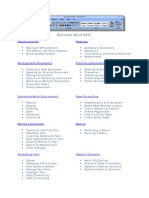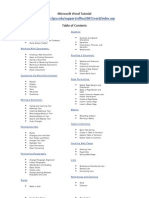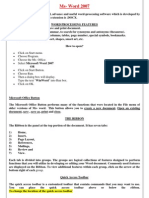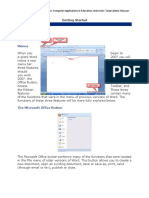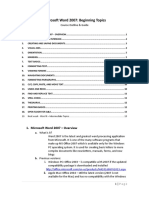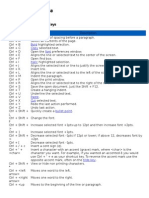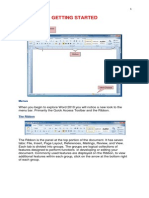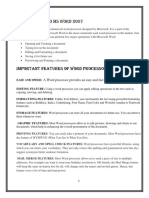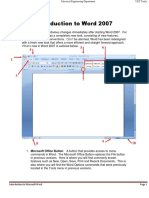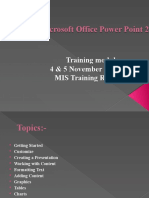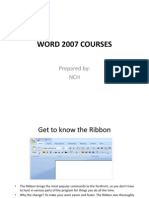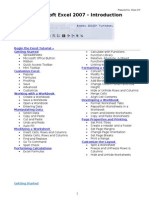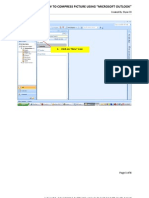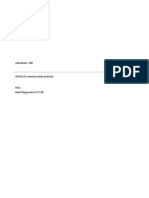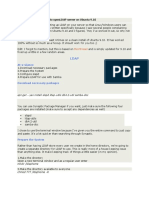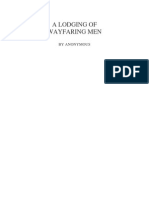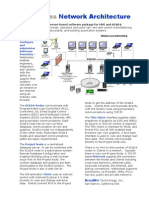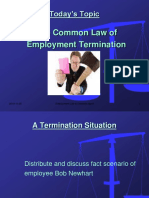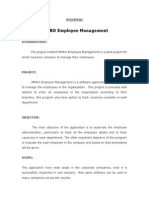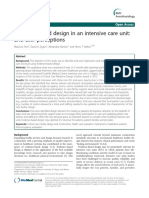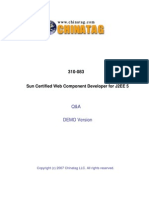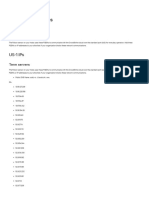0% found this document useful (0 votes)
430 views20 pagesMicrosoft Word 2007 - Introduction: Begin The Word Tutorial Getting Started Editing A Document
The document provides an introduction to Microsoft Word 2007, covering getting started, working with documents, customizing the Word environment, and editing documents. It discusses the main interface elements like the ribbon, quick access toolbar, and Microsoft Office button. It also covers how to create and open documents, save, rename, and close documents. Document views and working with multiple documents are explained. Customization options like popular, display, proofing and save settings are also summarized. The document is intended to help new users get acquainted with the basic Word 2007 features and functions.
Uploaded by
izahusniCopyright
© Attribution Non-Commercial (BY-NC)
We take content rights seriously. If you suspect this is your content, claim it here.
Available Formats
Download as DOC, PDF, TXT or read online on Scribd
0% found this document useful (0 votes)
430 views20 pagesMicrosoft Word 2007 - Introduction: Begin The Word Tutorial Getting Started Editing A Document
The document provides an introduction to Microsoft Word 2007, covering getting started, working with documents, customizing the Word environment, and editing documents. It discusses the main interface elements like the ribbon, quick access toolbar, and Microsoft Office button. It also covers how to create and open documents, save, rename, and close documents. Document views and working with multiple documents are explained. Customization options like popular, display, proofing and save settings are also summarized. The document is intended to help new users get acquainted with the basic Word 2007 features and functions.
Uploaded by
izahusniCopyright
© Attribution Non-Commercial (BY-NC)
We take content rights seriously. If you suspect this is your content, claim it here.
Available Formats
Download as DOC, PDF, TXT or read online on Scribd
/ 20


